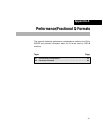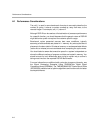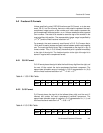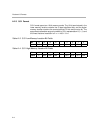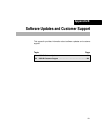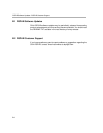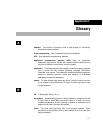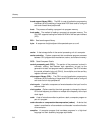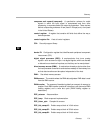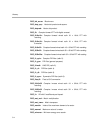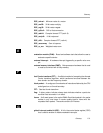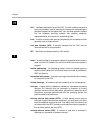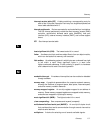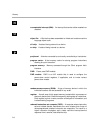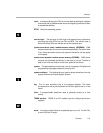
Glossary
C-3Glossary
compress and expand (compand): A quantization scheme for audio
signals in which the input signal is compressed and then, after
processing, is reconstructed at the output by expansion. There are two
distinct companding schemes: A-law (used in Europe) and μ-law (used
in the United States).
control register: A register that contains bit fields that define the way a
device operates.
control register file: A set of control registers.
CSL: See chip support library.
D
device ID: Configuration register that identifies each peripheral component
interconnect (PCI).
digital signal processor (DSP): A semiconductor that turns analog
signals—such as sound or light—into digital signals, which are discrete
or discontinuous electrical impulses, so that they can be manipulated.
direct memory access (DMA): A mechanism whereby a device other than
the host processor contends for and receives mastery of the memory bus
so that data transfers can take place independent of the host.
DMA : See direct memory access.
DMA source: The module where the DMA data originates. DMA data is read
from the DMA source.
DMA transfer: The process of transferring data from one part of memory to
another. Each DMA transfer consists of a read bus cycle (source to DMA
holding register) and a write bus cycle (DMA holding register to
destination).
DSP_autocor: Autocorrelation.
DSP_bexp: Block exponent implementation.
DSP_bitrev_cplx: Complex bit reverse.
DSP_blk_eswap16: Endian-swap a block of 16-bit values.
DSP_blk_eswap32: Endian-swap a block of 32-bit values.
DSP_blk_eswap64: Endian-swap a block of 64-bit values.



